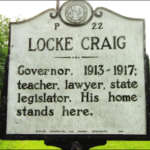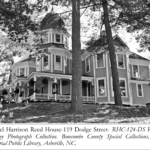![]()
Easements
What is a Preservation Easement?
An easement is a legal agreement between a property owner and a qualified preservation organization that restricts the development of or changes to a privately owned property. Key features of a preservation easement:
- The property owner promises to protect the property’s historic integrity, without inappropriate alterations, additions or demolition.
- The organization is granted the right to enforce the covenants of the easement and to monitor the property.
- The owner retains the right and duty to manage and care for the property, pay taxes on it, and can live and work in the building just as before. Owners may sell or lease the property or pass it on to heirs.
- The grantor/donor may benefit from certain tax advantages that result from the donation.
How Does an Easement Work?
A preservation easement is a legal agreement written in deed form and filed with the county register of deeds, thereafter included in the title to the land and affecting each succeeding owner just as it does the original grantor. Both the property owner and the easement-holding organization have responsibilities that are specified in the agreement. The owner is responsible for protecting the property’s historic integrity by not making incompatible alterations or additions and maintaining it in a satisfactory condition. The organization holding the easement is responsible for monitory and enforcing the conditions of the easement by inspecting the property and communicating with the property owner. The easement should be revealed during a title search done on the property, thereby notifying each potential new property owner of the easement’s existence and conditions property to purchasing the property.
What Does an Easement Protect?
A preservation easement protects property with significant historic, architectural or archaeological resource, which can include private residences, commercial buildings, landscapes and gardens, excavated foundations, and many other property types. Easements are flexible tools and can be custom designed to meet the personal and financial needs of the property owner. In some cases, the owner may choose only to protect the exterior of the building, but a preservation easement may also protect a building’s interior and important landscape elements, such as outbuildings, walls, terraces, or associated archaeological remains. The restrictions placed on the property are thoroughly discussed and agreed to by all parties.
What are the Advantages of an Easement?
An easement seldom significantly restricts the owner’s use and enjoyment of the land. Most landowners will continue to use their property just as before, but with the granting of the easement, the future of the property is no longer left to chance. Many donors have a deep personal connection to their historic property – it is a part of their family legacy or the cherished result of a life’s work – and with the donation of a preservation easement, they gain peace of mind that their beloved property will be preserved forever. A preservation easement can also be a tool for neighborhood preservation. An easement-protected property becomes a stable anchor for its neighborhood, demonstrating historic status and a heightened awareness of the value of preservation. In addition, an owner donating an easement may benefit from savings in income, property, and estate taxes.
What are the Tax Advantages of an Easement?
If IRS regulations are followed, a property owner may deduct the value of the easement from his or her federal income taxes as a charitable contribution, where the restrictions in a preservation easement preclude certain development alternatives and reduce the market value of the property. The easement will have a corresponding impact on estate and property tax assessments.
For example, assume a property is appraised at $100,000 without an easement. The owner donates a preservation easement, and a new appraisal values the property at $70,000. The $30,000 difference is the value of the easement, that is, the value of the interest in the property that has been transferred to the easement-accepting organization. Because that organization is typically a 501(c)(3) charitable organization, the easement is considered a charitable donation. The easement value ($30,000) can be taken as a tax deduction on federal and state income taxes. Also, the county tax assessor must take into account the reduction in value created by the easement and should tax the property at its restricted value ($70,000). The restricted value will also be used to calculate estate taxes. The financial impact of easement donation will be different for each owner and each property. Interested property owners are encouraged to consult their professional advisers.
What Properties Are Eligible for Easements and Associated Tax Benefits?
Preservation easements protect properties (land and structures) with significant historical, architectural or archaeological resources. Each organization that accepts preservation easements has its own standard for historic significance, but listing in the National Register of Historic Places is one standard that is typically used. Federal and state tax incentives are provided for the donation of easements that meet certain requirements. To qualify as a charitable contribution, and thus to earn federal and state income tax reductions, the easement must be perpetual, must be made to a qualified donee (typically, a non-profit preservation organization), and must meet one or more of the conservation purposes set out in the federal tax code:
- Preservation of historically important land or buildings (usually a property listed in the National Register of Historic Places, either individually or as a contributing structure to a district)
- Preservation of land for outdoor recreation or education
- Protection of relatively natural habitats of fish, wildlife or plants
- Preservation of open space pursuant to a clearly delineated governmental conservation policy
What If My Property Is in a Local Historic District?
Preservation easements and local historic districts protect historic properties through different mechanisms – an easement is a private legal agreement, whereas a local district is enforced through local preservation law. A historic property in a local district may also be protected with a preservation easement, which, in many cases, will be more restrictive than the district regulations. For example, many local historic district commissions have the power to delay demolition of a structure, not to deny it as is possible with an easement. Also, an easement may protect a structure’s interior features or require limited public access, which are typically not regulated by a local district. Local historic district restrictions must be included in calculations of the value of a preservation easement. IRS regulations state that an easement valuation must account for “any effect from … historic preservation laws that already restrict the property’s potential highest and best use.” Therefore, each property and the applicable local preservation law must be considered individually in order to correctly assess the value of a preservation easement. Additional requirements must be met if a donor wishes to take a tax deduction on an easement donation for a property in a local historic district. For example, the entire exterior of the property must be protected, alterations that are incompatible with the property’s historic character must be prohibited, and more detailed substantiation of the easement valuation must be provided. Donors interested in a tax deduction are encouraged to consult with a qualified tax professional.
How Long Does an Easement Last?
The duration of the easement is negotiated and recorded at the time the easement is written. It should be noted that if the landowner wishes to claim an income- or estate-tax deduction, the easement must be granted in perpetuity. In most cases, the owner will prefer a perpetual easement.
Can an Easement Be Changed?
Preservation easements are designed to ensure the preservation and protection of a cultural resource and are not designed to allow quick and simple alterations to the terms. After the easement has been recorded, if the donor wishes to change the easement, it may be altered only by mutual agreement of the parties. However, when the donor wishes to take an income or estate tax deduction, the easement must specify that it may be terminated or substantially altered only with the approval of a court of law, upon a showing that the original purpose is no longer attainable. In practice, easements are seldom altered.
What Expenses Will the Donor Incur?
There will be some costs for the donor. Generally, the donor of the easement pays the associated accounting, legal, survey and recording fees. Donors who wish to take advantage of the tax benefits of donating an easement will need an appraisal. Costs are also incurred by the recipient organization, most significantly in providing for perpetual monitoring and enforcement; therefore many organizations charge an administration fee for accepting easements. In most cases, PSABC asks that easement donors make a stewardship contribution to support our work and the ongoing monitoring of easement properties such as yours.
Who do I Contact for more Information?
For more information about preserving your historic property, contact PSABC at (828) 254-2343.



